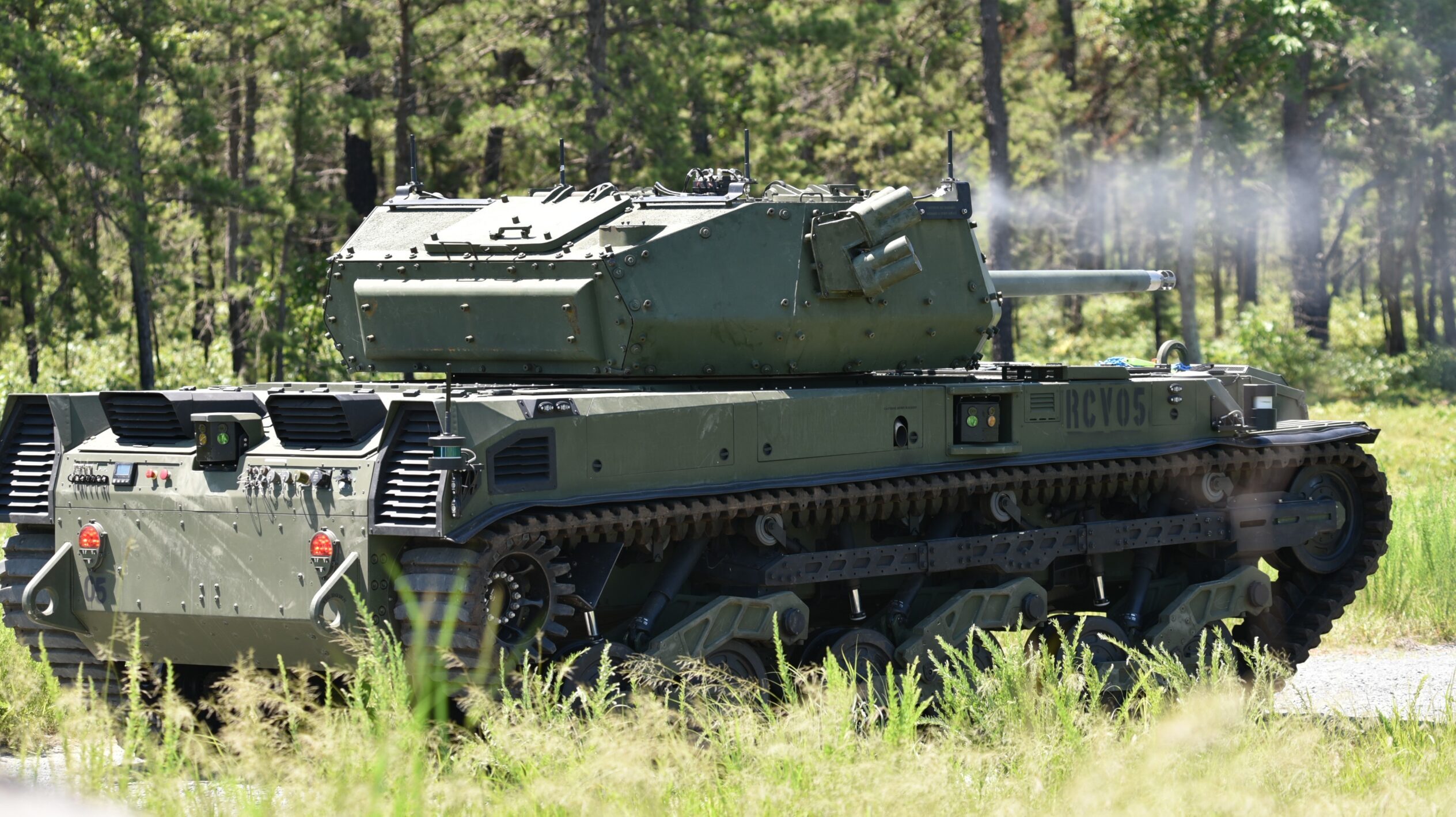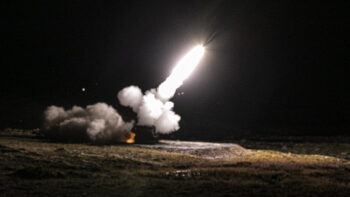
A Robotic Combat Vehicle-Medium fires a round at a target during the vehicle’s live fire testing at Fort Dix, N.J. (Angelique N. Smythe, Picatinny Arsenal Public Affairs)
GVSETS 2023 — The Army is “very close” to awarding contracts to suppliers for Phase I of the Robotic Combat Vehicle (RCV) program, according to an official of the Army Contracting Command.
Speaking today at the 15th Annual Ground Vehicle Systems Engineering & Technology Symposium, in Novi, Mich., Sean O’Reilly, Director of Ground Combat Systems and Sustainment said that the branch is “very close to making that award.”
The service plans to select up to four vendors for the designing, prototyping, and building a lightweight, easily transportable robotic platform. The winners will be evaluated on performance and design maturity during Phase I, and a single vendor will be selected in Q1 2025.
Brig. Gen. Geoffrey Norman, director of the Next Generation Combat Vehicle Cross-Functional Teams, told the audience on Wednesday that the Army is interested in a common interface for RCVs, which would provide interoperability and modularity in addition to accommodating various mission modules and payloads.
From his perspective, a single provider would not have to be responsible for designing a full robot solution “from the payloads down to the wheels or tracks on the ground.” Instead, Norman indicated, the service wants flexibility for what it mounts on the vehicle.
“Picatinny rail is a standard interoperability profile for small arms. Crew can mount optics on weapons in a way that hasn’t to be unique to any specific weapon, and we want to do the same thing with Robotic Combat Vehicles,” Norman said.
RELATED: ‘Lightning in a bottle’: Inside the ‘Origin’ of the Army’s future robotic fleet
The RCV effort is intended to provide the Army with a family of unmanned and configurable platforms. According to the service, RCVs will deliver decisive lethality by rapidly developing situational awareness and enabling commanders to employ external or onboard weapon systems while reducing the aggregate tactical risk to the formation. It will also provide EW and C-UAS capabilities at the platoon level.
The UGVs will be upgradable in order to accommodate software and hardware innovations as well as new technologies throughout their life cycle.
From a warfighting perspective, RCVs would offer commanders multiple engagement options, enabling them to contest enemy maneuver forces, and facilitating simultaneous multi-domain strikes — without putting soldiers at risk.
“What we are doing is experimenting, learning, and iterating in order to refine what we actually want or need,” Norman said.
The program comprises the acquisition of light (RCV-L), medium (RCV-M), and heavy (RCV-H) UGVs, with Phase 1 covering the RCV-L design. The service considers that the RCV-L should be an expendable weapon system, meaning its destruction in combat would be expected and acceptable.
Additionally, the RCV-L should be smaller than 224 x 88 x 94 inches and weigh less than 10 tons. A single platform should be able to defeat light- to medium-armored threats and feature onboard lethal capacities such as self-defense systems, anti-tank guided missiles, or recoilless weapons. It should also be transportable by rotary wing aircraft.
The RCV-M, meanwhile, should be more survivable than the RCV-L, weigh between 10 and 20 tons, have no more than 230 x 107 x 94 inches, and be transported by a C-130 aircraft.
In the case of the RCV-H, it should weigh between 20 and 30 tons and measure less than 350 x 144 x 142 inches. The platform should be transported by a C-17 aircraft and be fitted with onboard direct-fire weapon systems capable of defeating all known enemy armored vehicles.
RCV-H is considered by the branch as a nonexpendable weapon system and should be as survivable as a crewed system.






















